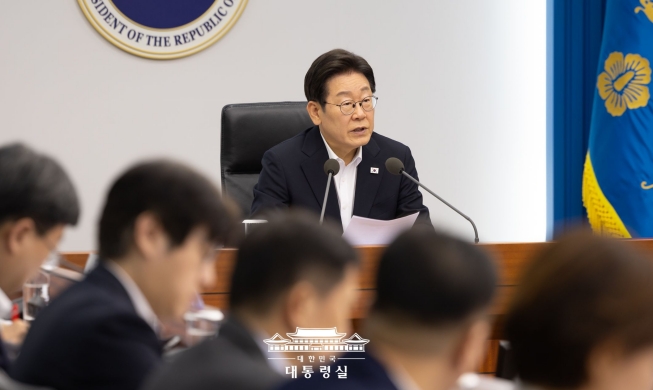View this article in another language
- 한국어
- English
- 日本語
- 中文
- العربية
- Español
- Français
- Deutsch
- Pусский
- Tiếng Việt
- Indonesian

By Tim Alper
Summer is in full swing in Korea. Schools and universities are closed until September. There are empty seats aplenty in offices all over the country, with people away on their annual summer holidays. Every summer at this time, it seems the whole country gets in the mood to relax.
For many, this now means heading overseas. In recent years, spurred on by some wildly popular travel-based reality TV shows, Koreans are opting for international exploits.
However, the appeal of domestic travel also remains high. With ever-affordable coach tickets, the advent of Korean budget air carriers and a fast-expanding high-speed train network, exploring Korea has never been so easy, for Koreans, tourists and expats alike.
One of travelers’ most beloved parts of Korea is the subtropical island of Jeju, currently enjoying a new lease on popularity thanks to a hit reality TV program. Entitled "Hyori's Bed and Breakfast" (효리 네 민박), the show follows the escapades of one of Korea’s most famous female pop artists, Lee Hyori, who famously upped sticks from her home in Seoul in search of a more peaceful life on the island.
Jeju has much to offer, and was once every honeymooning couple’s favorite destination. The island’s heart is a dormant volcano, and it's mainly composed of distinct, porous, jet-black petrified lava. Most choose to cycle or drive around the island, while hiking fans flood to Jeju’s center to ascend the iconic volcanic peak of Hallasan Mountain.
Foodies from all four corners of the earth are also drawn to Jeju. The island boasts some of the best galchi, or scabbard fish, in the country, enjoyed either grilled or braised in a spicy white radish marinade. I recommend the latter for some really delicious flavor. Serious carnivores, meanwhile, are keen to sample another Jeju specialty, barbequed black pig.
Another destination that remains popular is Busan, the country’s second city. A significant sea port, Busan is also home to two of the biggest tourist draws Korea has to offer, Haeundae Beach and Jagalchi Market.
The former is Korea’s summer party central, a go-to venue for sunbathing and sea swimming by day and beachside fireworks and moonlit al fresco festivities by night.
The market, meanwhile, is a colorful celebration of seafood. Its main building comprises seven stories of restaurants, fishmongers and gigantic tanks of everything from live sea squirts to gigantic, writhing octopuses.
The action spills out onto the waterfront outside and the surrounding streets, where fishing crews come from all seven seas to ply their wares. Here, you can find my own personal favorite dining spot in the city, an ever-lively clutch of restaurants where Busan’s celebrated gomjangeo grilled sea eels were first conceived.
Jagalchi merchants once traded in sea eel-skin accessories, crafting wallets and belts out of the animals’ tough skins. They would then cook the byproducts -- eel meat -- over gas burner grills encased in old oil cans, seasoning them with salt or a spicy chili sauce.
The popularity of this fare soon spread beyond the market, piquing the curiosity of diners from all over the country. Many of the nation’s first gomjangeo stalls are still doing business here, making for a slice of Korean gastronomic history that never fails to fascinate, no matter how many times I visit.
Korea’s east coast, too, is well worth exploring. Surrounded by some of the steepest mountains in the country, the beaches of northeastern Gangwon-do Province are often spectacular. Sokcho is one of the most well-known of Gangwon’s many picturesque seaside towns, possibly because of its proximity to the much-visited Seoraksan National Park.
Like Busan and Jeju, nature is only one of Sokcho’s main attractions, the other being food. Gangwon-do Province sweet corn and potatoes are renowned, and come into season in the summer. Sokcho is also famous for its stuffed squid, as well as its many grilled fish restaurants and marinated fried chicken outlets.
Other parts of the country also enjoy much-deserved summertime popularity. Daecheon, also known as Boryeong, is arguably the highlight of the west coast. Famed for its annual mud festival, its main beach is 3.5-km and its fish markets offer inexpensive but mouthwatering delights. I recommend seeking out jumbo shrimp, grilled on a bed of rock salt.
Even though the heat can be intense from June to August, Korea’s long summer days and balmy nights never fail to get travelers in the mood for adventure. With so much to see and eat from June to August, in my experience there can be no better time of the year to travel around Korea.
Tim Alper is a writer and columnist, originally from the U.K., who has lived in Korea for more than 10 years.
Most popular
- Songs from 'KPop Demon Hunters' dominate global Billboard charts
- Council sets minimum hourly wage in 2026 at KRW 10,320
- 28th annual Boryeong Mud Festival to offer more night events
- K-Culture Festa in New York to mark 80th anniversary of liberation
- Buddhist sutra, rare painting set returned from Japan unveiled
